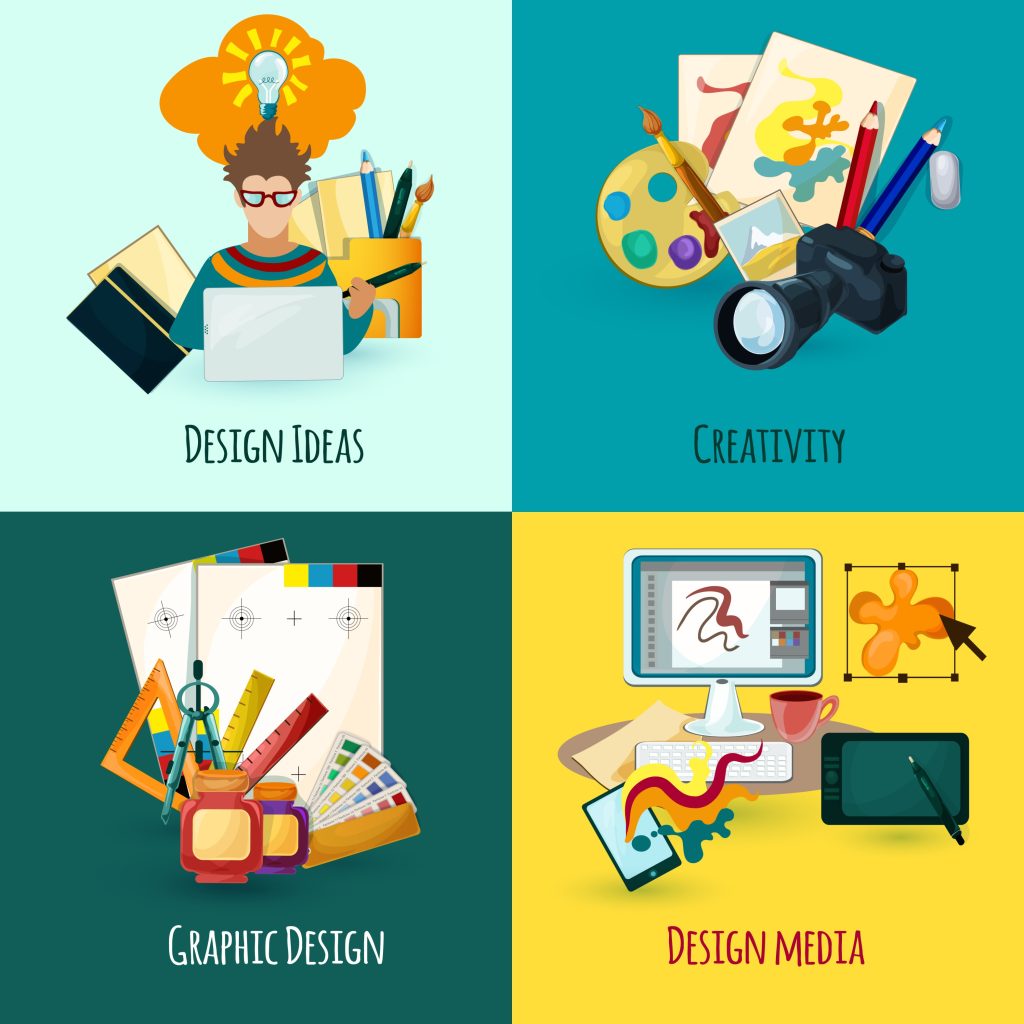Graphic Designs: Latest Trends and Techniques
Graphic design is an ever-evolving field that thrives on innovation and creativity. In the dynamic realm of design, staying updated with the latest trends is crucial for designers looking to push the boundaries and create impactful visuals. Let’s dive into the exciting world of current graphic design trends that are shaping the visual landscape.
Graphic Design Trends

1. Minimalism with Depth
Designs are embracing depth by incorporating shadows, gradients, and overlapping elements. This infusion of understated complexities into clean and simple designs adds layers of sophistication, creating visually engaging compositions.
2. Bold Typography and Font Pairing
Typography is taking center stage, moving beyond the realm of mere text. Designers are experimenting with bold and expressive typography, combining different fonts creatively to make statements. The strategic pairing of contrasting fonts adds dynamism and personality to designs.
3. Vibrant Color Palettes and Gradients
A rebirth of bold and vibrant color palettes is making waves in design. From eye-catching neon to rich and saturated hues, bold colors are commanding attention. Gradients, once considered antique of the past, are making a stylish comeback, infusing designs with depth and visual interest.
4. Asymmetry and Abstract Layouts
Breaking away from traditional symmetrical grids, asymmetrical layouts are gaining popularity. They inject movement and uniqueness into designs, capturing the viewer’s attention. Abstract layouts, with their artistic and unconventional arrangements, foster a sense of creativity and originality.
5. Sustainability and Eco-conscious Design
With a growing emphasis on sustainability, eco-conscious design is becoming a prominent trend. Designers are incorporating eco-friendly elements, using recycled materials, and employing earthy color palettes to convey messages of environmental awareness and responsibility.
6. 3D and Immersive Experiences
Advancements in technology have pushed 3D design into the spotlight. From product visualization to web design, 3D elements are enhancing visual storytelling and creating immersive user experiences. Augmented Reality (AR) and Virtual Reality (VR) are also playing significant roles in pushing design boundaries.
These trends reflect the ever-evolving nature of graphic design. They offer a spectrum of opportunities for designers to experiment, innovate, and elevate their creations. By incorporating these elements thoughtfully, designers can craft visually stunning narratives that resonate with audiences.
Graphic Design Techniques

1. Grid Systems for Layouts
Grid systems are the backbone of design layouts. They provide structure and consistency, ensuring visual harmony and ease of comprehension. Whether using a strict grid or opting for a more flexible approach, mastering grid-based layouts helps organize content and maintain a clear visual hierarchy.
2. Understanding Typography Principles
Typography is more than selecting fonts. It involves understanding hierarchy, spacing, and readability. Mastery of typography principles—such as kerning, leading, and tracking—allows designers to create visually appealing text that complements the overall design and enhances communication.
3. Color Theory and Application
Color is a powerful tool in design. Understanding color theory—comprising principles like hue, saturation, and contrast—enables designers to evoke emotions and convey messages effectively. Mastery of color application helps in creating cohesive and visually striking designs.
4. Image Editing and Manipulation
Image editing skills are essential for graphic designers. Proficiency in software like Adobe Photoshop allows for precise editing, retouching, and manipulation of images. From adjusting colors to creating composite visuals, image editing expertise adds depth and realism to designs.
5. Vector Graphic Creation with Illustrator
Adobe Illustrator is a go-to tool for vector graphics. Mastering Illustrator enables designers to create scalable, high-quality artwork. It involves creating shapes, using pen tools, and mastering anchor points to produce crisp and versatile illustrations and logos.
6. Understanding Composition and Balance
Composition is the arrangement of visual elements in a design. Understanding principles like balance, proportion, and focal points helps in creating visually appealing and harmonious layouts. Achieving a balanced composition directs the viewer’s attention and enhances overall aesthetics.
7. Applying Design for User Experience (UX)
Design isn’t just about aesthetics; it’s about user experience. Learning UX principles helps in creating designs that are not only visually appealing but also intuitive and user-friendly. Understanding user behavior and applying design thinking enhances the effectiveness of the final product.
8. Experimenting with Visual Effects and Techniques
Exploring visual effects and techniques adds style to designs. Whether it’s experimenting with textures, using gradients, or incorporating 3D elements, mastering various visual effects widens the creative toolkit and allows for innovative and captivating designs.
Mastering these graphic design techniques is about blending creativity with technical expertise. While tools and software are essential, it’s the application of these techniques that distinguishes a good designer from a great one. Continuous practice, exploration, and experimentation are key to sharpening these skills and pushing the boundaries of creativity in graphic design.
In essence, the world of graphic design is a canvas of endless possibilities. Embrace the trends, experiment, and let your creativity flow. After all, it’s the fusion of innovation, skill, and creativity that defines the captivating and ever-evolving world of graphic design. These techniques serve as a foundation for crafting designs that not only visually captivate but also effectively communicate messages. Embrace these techniques, experiment with them, and let them be the guiding pillars in your creative journey as a graphic designer.





